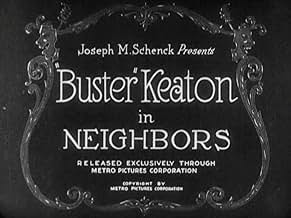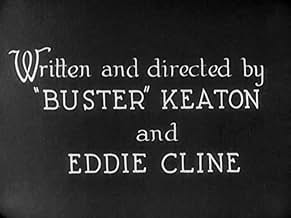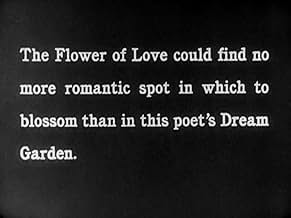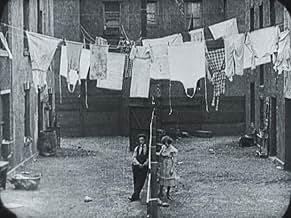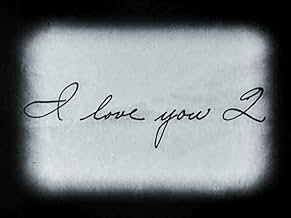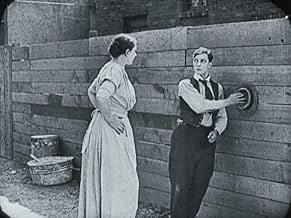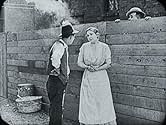Neighbors
- 1920
- 18 min
AVALIAÇÃO DA IMDb
7,5/10
4,9 mil
SUA AVALIAÇÃO
Adicionar um enredo no seu idiomaA young couple who live next to each other in tenement apartments do everything they can to be together despite of their feuding families.A young couple who live next to each other in tenement apartments do everything they can to be together despite of their feuding families.A young couple who live next to each other in tenement apartments do everything they can to be together despite of their feuding families.
- Direção
- Roteiristas
- Artistas
Edward F. Cline
- The Cop
- (não creditado)
Jack Duffy
- The Judge
- (não creditado)
The Flying Escalantes
- Themselves
- (não creditado)
Virginia Fox
- The Girl
- (não creditado)
Joe Keaton
- His Father
- (não creditado)
Joe Roberts
- Her Father
- (não creditado)
- Direção
- Roteiristas
- Elenco e equipe completos
- Produção, bilheteria e muito mais no IMDbPro
Avaliações em destaque
Buster is in love with his next door neighbor, but her father hates Buster and won't allow them to see each other. As a result, again and again, Buster does a lot of crazy stunts in order to see her--as well as eventually kidnap her so they can elope. The stunts are amazing and this is a very good movie. However, if it weren't for all his better brilliant films, I might have scored this a bit higher. But films such as STEAMBOAT BILL, JR., COPS, OUR HOSPITALITY and THE PLAY HOUSE (among others) are simply better than NEIGHBORS. So, I would recommend you try watching these other films and then come back to it. Still, it's enjoyable and fun.
Being one of Keaton's earliest and most recognised short film, Neighbours is full of passion, fast-paced, frantic and at times even romantically touching. It's innocent, light-hearted and airy, and just about sums up Buster's earliest work, going from slapstick nonsense to refreshing (for the time) character-driven gags that deliver just as well. Sure enough the feature is not without its drawbacks which do hinder the overall pacing and breezy feeling present in the short's best moments. Much like The Balloonatic, the greatest parts here lie in acts one and three, with the middle section giving way to fine moments of zany antics, but with plenty of superfluous additions to boot.
The plot here follows a young man and woman madly in love as they attempt to bring themselves together against their begrudging families. What follows is a piece of hilarious and wild twenty minute entertainment full of laughs and great images. Keaton himself is truly captivating as always, and delivers some of his most inspired and tricky stunts here which do well to thrill and bring up a laugh or two out of the sheer spectacle of what is going on. Throw in a beautiful supporting actress, and a whole host of very vivid personalities backing Buster, plus troublesome trousers, quarrelling families and you have a film that is sure to stick with you, despite its obvious inconsistencies and less successful moments.
For more of my reviews, please visit here: http://www.invocus.net
The plot here follows a young man and woman madly in love as they attempt to bring themselves together against their begrudging families. What follows is a piece of hilarious and wild twenty minute entertainment full of laughs and great images. Keaton himself is truly captivating as always, and delivers some of his most inspired and tricky stunts here which do well to thrill and bring up a laugh or two out of the sheer spectacle of what is going on. Throw in a beautiful supporting actress, and a whole host of very vivid personalities backing Buster, plus troublesome trousers, quarrelling families and you have a film that is sure to stick with you, despite its obvious inconsistencies and less successful moments.
For more of my reviews, please visit here: http://www.invocus.net
No, nothing to do with the Aussie soap opera. This "Neighbors"- I keep the original American spelling- is a silent comedy short from 1920. The plot is a comic take on the "Romeo and Juliet" story. Buster Keaton and Virginia Fox play young lovers who live in flats in adjoining buildings but whose families are constantly quarrelling with one another. Both families are, of course, hostile to the young people's relationship, and the film is the story of how Buster and Virginia overcome the obstacles to their love. (I use the names of the actors because we never find out the names of their characters. The cast-list simply refers to "The Boy" and "The Girl").
Modern rom-coms also often deal with how young couples deal with the obstacles to their love, but today such "obstacles" are generally metaphorical- not only parental disapproval but also things like differences in social class or a fear of commitment. This being a silent comedy, however, the obstacles in "Neighbors" can be literal, physical barriers such as a wooden fence separating the two properties and the fact that Virginia's bedroom is on the third floor. Buster has to use his acrobatic skills to overcome these barriers with circus-style stunts involving a trapeze and much balancing on top of ladders.
Films like this were a part of my childhood in the sixties and seventies because they were often shown on British television. I suspect that this was done to provide a nostalgic treat for my grandparents' generation, who would have remembered them from their youth, but they also proved popular with my own generation. My parents were both born in the thirties and, having grown up after the sound revolution, regarded silents as very old-fashioned, so I often ended up watching them with Grandma and Grandpa. I was certainly not alone among my schoolfriends in my enthusiasm for these old films; they were not expressly made as children's films, but there was obviously something about their physical style of humour which appealed to the young.
To the modern adult, this style of humour can seem as unsophisticated as it did to my parents; one of the gags, for example, involves Buster's trousers falling down during the wedding ceremony after his belt breaks. We have to remember, however, that the cinema of the 1910s and early 1920s was, of necessity, experimental. Silent acting, whether in comedy or serious drama, was something new, and film-makers could not rely upon the traditional skills of the theatre, where actors could speak. Pioneers like Keaton, who acted as co-writer and co-director of this film, had to be continually experimenting to find out what worked and what didn't. And in "Neighbors" he does sometimes succeed in making us laugh.
Modern rom-coms also often deal with how young couples deal with the obstacles to their love, but today such "obstacles" are generally metaphorical- not only parental disapproval but also things like differences in social class or a fear of commitment. This being a silent comedy, however, the obstacles in "Neighbors" can be literal, physical barriers such as a wooden fence separating the two properties and the fact that Virginia's bedroom is on the third floor. Buster has to use his acrobatic skills to overcome these barriers with circus-style stunts involving a trapeze and much balancing on top of ladders.
Films like this were a part of my childhood in the sixties and seventies because they were often shown on British television. I suspect that this was done to provide a nostalgic treat for my grandparents' generation, who would have remembered them from their youth, but they also proved popular with my own generation. My parents were both born in the thirties and, having grown up after the sound revolution, regarded silents as very old-fashioned, so I often ended up watching them with Grandma and Grandpa. I was certainly not alone among my schoolfriends in my enthusiasm for these old films; they were not expressly made as children's films, but there was obviously something about their physical style of humour which appealed to the young.
To the modern adult, this style of humour can seem as unsophisticated as it did to my parents; one of the gags, for example, involves Buster's trousers falling down during the wedding ceremony after his belt breaks. We have to remember, however, that the cinema of the 1910s and early 1920s was, of necessity, experimental. Silent acting, whether in comedy or serious drama, was something new, and film-makers could not rely upon the traditional skills of the theatre, where actors could speak. Pioneers like Keaton, who acted as co-writer and co-director of this film, had to be continually experimenting to find out what worked and what didn't. And in "Neighbors" he does sometimes succeed in making us laugh.
This is one of the few short films that was understated on the back on the DVD. Usually they make it sound better than it often winds up. Despite little buildup, this was tremendous fun for 18 minutes.
The very beginning is very innocent as Harold and Virginia Fox exchange love notes through a peephole in a fence that divides their family's tenement properties. Quickly, the parents of each come out, intercept the messages, disapprove, meddle further and then get involved in one wild and crazy scene after another. Featured are some terrific stunts and just general madness and mayhem with one funny sight gag after another. This is so frenetic that it has to be seen, not read about. Just be ready for a wild ride of feuding neighbors and cops.
It does calm down for a minute or two when a judge makes the parents sign a "peace treaty." Harold then announces he and Virginia are going to get married.....and they try to do that but, a combination of pants that won't stay up (don't ask) and Virginia's father, Big Joe Roberts, break that up. Now we go back to slapstick and clever scenes as Buster's friends help get his girl back. It's another crazy finish, albeit a short one.
It's very inventive stuff and one of Harold's best. It is an extra on the "Seven Chances" DVD. Note: Playing Buster's dad in here was his real-life father, Joe Keaton.
The very beginning is very innocent as Harold and Virginia Fox exchange love notes through a peephole in a fence that divides their family's tenement properties. Quickly, the parents of each come out, intercept the messages, disapprove, meddle further and then get involved in one wild and crazy scene after another. Featured are some terrific stunts and just general madness and mayhem with one funny sight gag after another. This is so frenetic that it has to be seen, not read about. Just be ready for a wild ride of feuding neighbors and cops.
It does calm down for a minute or two when a judge makes the parents sign a "peace treaty." Harold then announces he and Virginia are going to get married.....and they try to do that but, a combination of pants that won't stay up (don't ask) and Virginia's father, Big Joe Roberts, break that up. Now we go back to slapstick and clever scenes as Buster's friends help get his girl back. It's another crazy finish, albeit a short one.
It's very inventive stuff and one of Harold's best. It is an extra on the "Seven Chances" DVD. Note: Playing Buster's dad in here was his real-life father, Joe Keaton.
This Buster Keaton short has some outstanding and breathtaking stunts. You have to see it to believe it.
Buster is in love with his neighbour. They send notes through a hole in the fence. Their respective fathers disapprove of the romance.
Buster is determined to marry his girl even though he goes through a series of mishaps involving both families and the police.
The plot itself is frothy and silly. Buster constantly gets detained by a policeman and then escapes. At one point he is blacked up when escorted by a policeman and then runs away for the policeman to arrest a black man who walks past.
Given that this short was made in 1920. This is still the early days of cinema. Some of the physical acrobatic stuff Buster does is impressive, including three men standing on top of each other which happens at the end. A few times I had to rewind it and watch it again.
Buster is in love with his neighbour. They send notes through a hole in the fence. Their respective fathers disapprove of the romance.
Buster is determined to marry his girl even though he goes through a series of mishaps involving both families and the police.
The plot itself is frothy and silly. Buster constantly gets detained by a policeman and then escapes. At one point he is blacked up when escorted by a policeman and then runs away for the policeman to arrest a black man who walks past.
Given that this short was made in 1920. This is still the early days of cinema. Some of the physical acrobatic stuff Buster does is impressive, including three men standing on top of each other which happens at the end. A few times I had to rewind it and watch it again.
Você sabia?
- CuriosidadesIncluded in "Buster Keaton: The Shorts Collection" blu-ray set, released by Kino.
- Citações
His Father: He's my son and I'll break his neck any way I please!
- ConexõesEdited into The Golden Age of Buster Keaton (1979)
Principais escolhas
Faça login para avaliar e ver a lista de recomendações personalizadas
Detalhes
- Tempo de duração
- 18 min
- Mixagem de som
- Proporção
- 1.33 : 1
Contribua para esta página
Sugerir uma alteração ou adicionar conteúdo ausente

